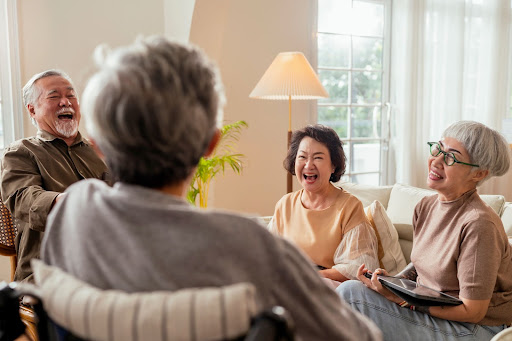The growing number of seniors has inspired a new trend in home design, aging-in-place features. These features, aimed at enabling older adults to live in their homes independently and comfortably for as long as possible, are growing in demand. After all, isn’t it only fair that as we age, our homes evolve with us, accommodating our changing needs?
In this post, we will delve into a world of home adaptations that are not just practical but stylish, proving that safety and accessibility don’t need to come at the cost of aesthetic appeal.
At its core, the aging-in-place design embraces the idea that our living environment should accommodate us at all stages of life. This philosophy takes into account mobility issues that come with age and chronic illness, including single-story layouts, wider doorways, and the installation of grab bars, all designed to enhance accessibility, comfort, and safety.
Key Aging-in-Place Home Features
Let’s delve deeper into the aging-in-place features you can incorporate in your home:
Single-Story Layouts:
As mobility decreases, climbing stairs can become a challenge. Single-story layouts eliminate this obstacle, creating a living space that is easier to navigate. For those with multi-story homes, consider modifying the ground floor to include all necessary facilities such as the bedroom, bathroom, and kitchen.
Wider Doorways:
The standard doorway width might pose a problem for individuals who use mobility aids like wheelchairs or walkers. Widening doorways to at least 36 inches ensures ease of movement throughout the house. Plus, it lends an open, airy feel to the home.
Grab Bars:
Grab bars are the superheroes of aging-in-place design. Installed in crucial areas like bathrooms and corridors, they provide additional support for maintaining balance. With numerous stylish options available, they can seamlessly blend with your home decor.
No-Threshold Showers:
Stepping over the edge of a bathtub or shower threshold can become risky as we age. No-threshold or walk-in showers are a safer alternative. They are not just practical, but can also be luxuriously designed, adding a spa-like feel to your bathroom.
Improved Lighting:
As our eyes age, they require more light to see clearly. Good lighting can prevent accidents and make living spaces more comfortable. Consider incorporating brighter lights, nightlights in corridors, and task lighting in reading or working areas.
Lever Handles:
Turning door knobs can be a challenge for individuals with arthritis or other hand mobility issues. Lever-style handles are easier to operate and can be a great addition to your home.
Adjustable Countertops and Shelves:
Kitchen and storage spaces should also be designed with accessibility in mind. Adjustable countertops and pull-down shelving units make it easy for individuals of varying mobility and height to use the kitchen and storage areas.
Slip-resistant Flooring:
Falls can pose a significant risk for seniors. Thus, consider installing slip-resistant flooring. Choose materials like rubber or cork that not only reduce the risk of slipping but also offer some cushioning in case of falls.
Technology Integration:
Smart home technology can contribute significantly to creating an aging-in-place-friendly environment. Automated lighting, voice-controlled devices, security systems, and emergency response systems can increase both convenience and safety.
Adopting these aging-in-place features does more than just make a home safe and accessible for seniors. It creates a comforting environment that offers the freedom of independent living, dignity, and improved quality of life in their golden years. With thoughtful design, safety, and accessibility can indeed go hand-in-hand with style and comfort.
Aging-in-Place
Creating an environment that supports aging-in-place requires forethought, planning, and a keen understanding of the challenges that aging can present. As we build and adapt our homes, we must keep these considerations in mind, promoting a lifestyle that values independence, safety, and comfort, regardless of age.
After all, home is more than just a place – it’s a familiar sanctuary, filled with memories and the promise of future ones. By incorporating aging-in-place features, we can ensure that everyone can enjoy the comfort and security of their own home for as long as possible.
